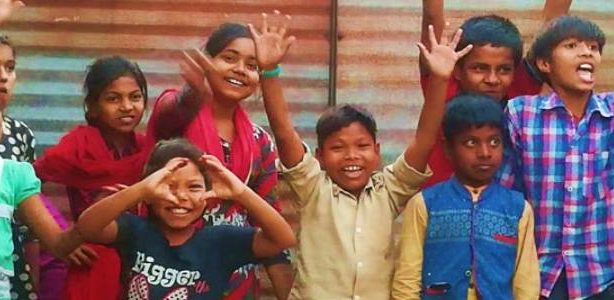Unraveling the Afghan Refugee Crisis: Anureet’s Research Journey
Embarking on a profound quest for knowledge and understanding, Anureet has taken on the daunting challenge of unraveling the complexities of the Afghan refugee crisis. Through rigorous research and a thirst for truth, she explores the multifaceted factors that have led to the displacement of millions of Afghans.

Armed with data, empathy, and an unyielding dedication to humanitarian causes, Anureet’s research paper delves deep into the heart of the crisis, you can read her paper below,
Introduction
The refugee crisis in Afghanistan has been exacerbated by over four decades of conflict and instability, resulting in a dire humanitarian situation. As of the end of 2021, an estimated 6 million Afghans have been forcibly displaced from their homes, with 3.5 million displaced within Afghanistan and 2.6 million hosted as refugees in other countries. This makes Afghanistan one of the largest protracted refugee situations worldwide. The displacement has been driven by the threats posed by the Taliban government and terrorist groups, compounded by collapsing incomes, lack of basic services, food insecurity, and rising starvation levels. A severe drought has further worsened the situation, affecting crops and leading to food shortages.
Refugee Crisis Challenges for Vulnerable Communities
The lack of security and access to essential services has resulted in immense challenges in vulnerable communities which further lead to deteriorating living conditions, loss of livelihoods, and increased vulnerability to violence and exploitation. Moreover, women and children face disproportionate risks, with projected increases in mortality rates due to limited access to healthcare and proper nutrition.
Some 29.2 million people are projected to need humanitarian assistance in 2023. Afghan women and girls face a worsening systematic rights crisis. Their exclusion from secondary and tertiary education and the ban on Afghan women from working with non-governmental organizations and the UN has significantly increased safety threats. The operating environment remains complex, with bureaucratic impediments increasing and humanitarian space shrinking. However, UNICEF remains committed to staying and delivering life-saving activities in underserved areas focusing on WASH, health, nutrition, education, and child protection. In 2023, US$1.45 billion is urgently needed, and without this funding, the humanitarian needs of 19 million people in Afghanistan will remain unmet.
Reasons for Forced Displacement
Forced migration and displacement in Afghanistan are often associated with the Soviet Union’s occupation of Afghanistan, the civil war which erupted after the collapse of the communist regime in 1992, and the Taliban’s emergence in 1994. Although forced displacement and migration have a more extended history, they became more common during the formation of the modern centralized Afghan state under Abdur Rahman Khan’s rule (1880-1901). The latter must also be distinguished from the founding of an Afghan state in the eighteenth century. The Pashtun emir suppressed his opponents ruthlessly and forced thousands of ethnic Hazaras, Uzbek, Tajiks, and Pashtuns to leave the country or resettle in other provinces where they could not pose a threat to his government.
Additionally, the Afghan ruler was afraid of Russia’s increasing presence in Central Asia during the ‘Great Game’ in which the British used Afghanistan as a buffer state against Russia’s expansion, which led him to resettle thousands of Pashtun settlers in the North bordering Central Asian countries. He also encouraged voluntary resettlement of Pashtuns by offering financial support, livestock, land and tax exemption in depopulated regions and in provinces inhabited predominantly by other ethnic groups. The Pashtun Kuchi (nomads) were also permitted seasonal pastures in fertile valleys.
However, with the Soviet Union’s invasion of Afghanistan in 1979, millions of Afghans, among them Pashtuns, were forced to leave their villages and hometowns, shaping the first wave of migration and displacement in Afghanistan. Different ethnic groups joined the resistance against the Red Army mostly under the leadership of leaders who were coming from the same ethnicity. This also emboldened ethnic cleavages afterwards during the civil war, once the Soviet Union left and the communist government collapsed. These tribal leaders, better known as ‘warlords’, fought against each other for power-grab using ethnocentric narratives dividing the country into several regions of power from 1992 to 1996. In this time, many Afghans who could afford it left the country, and some others were displaced or moved to provinces or regions where warlords from the same ethnic groups were in power.
Destination of Afghan Refugees and Challenges Faced
After fleeing his native Afghanistan, a young 22-year-old boy Feraidon Hakimi arrived at Washington Dulles International Airport and was relocated to the Fort Pickett military base in Blackstone. Four months later, he moved into a house in Maryland. But his journey in the U.S. is still just beginning. The last groups of Afghan refugees who were living on U.S. military bases have departed. However, refugee agencies say the refugees still face immense challenges in the next step of resettlement. Feraidon Hakimi has had three different homes. Affordable housing is still a top concern for resettling refugees. Challenges remain ahead for both refugees leaving military bases and the resettlement agencies that are working to help them. For example, finding affordable housing is still a major difficulty, especially in regions that Afghans prefer to live in, like California and Northern Virginia.
The Russian invasion of Ukraine leaves organizations bracing for more refugees. While organizations like the Lutheran Immigration and Refugee Service are still providing aid to Afghan refugees.
International Response and Efforts to Help
UNHCR, the UN Refugee Agency, and humanitarian partners have launched a response plan to support 7.9 million people: 5.2 million Afghans —including refugees— and 2.7 million of their local hosts across the region. The Regional Refugee Response Plan for the Afghanistan Situation 2023 seeks US$613 million to support Afghans sheltering in five neighbouring countries: Iran, Pakistan, Tajikistan, Turkmenistan and Uzbekistan. These countries host 8.2 million Afghans, including over 2 million registered refugees. Many have been in the region for decades, mainly in the Islamic Republics of Iran and Pakistan. These countries have generously accommodated Afghans, offering them access to public services at significant cost. An estimated 1.6 million have arrived in the region since 2021. Over 70 per cent of those needing support are women and children. A separate UN-wide plan has also been launched to respond to humanitarian needs inside Afghanistan. That plan seeks $4.62 billion for some 23.7 million Afghans in 2023. A record 28.3 million people require humanitarian and protection assistance. UN and its partners are appealing to the international community not to forget or neglect the people of Afghanistan.
Humanitarian partners remain on the ground, delivering assistance and protection inside Afghanistan and in the region, despite the challenges. Financial support remains critical to remove widespread hunger, disease, malnutrition and, ultimately, death. A similar funding appeal for 2022 was only 52 per cent funded, with $321 million received of the $623 million required. Despite the shortfall, UNHCR and partners have supported millions of Afghans and their hosts in neighbouring countries. Vital humanitarian work resulted in further access to healthcare, primary and secondary education, financial assistance and improvements in water supply systems.
Role of NGOs in Rehabilitation
Non-Governmental Organizations (NGOs) play a crucial role in the rehabilitation process of Afghan refugees. NGOs have worked in Afghanistan and Pakistan for decades providing humanitarian assistance to Afghans through agriculture, health, education, water supply, sanitation and income generation programmes. The challenges have been more significant than they have ever been. NGOs must remain neutral whilst working alongside the Afghan Government and International Military forces. The inevitable but necessary tensions between them must be understood, managed, and somehow reconciled for their essential work to continue. Each sector has its unique contribution to the successful reconstruction of Afghanistan, and its individual objectives must be pursued without prejudicing those of the others.
NGOs are crucial in Afghanistan’s education policy and work closely with the Ministry of Education and the United Nations Children’s Fund (UNICEF). The Back to School Campaign in March 2002 resulted in over three million girls and boys returning to school, and NGOs are actively involved in formulating teacher training policies and standards. Children with no home – ‘street children’ – have few to care for besides NGOs who provide basic education and care. They advocate for educating Afghanistan’s numerous disabled children and the importance of meeting their special needs. UNICEF and the United Nations Assistance Mission to Afghanistan (UNAMA) will be supported by NGOs in targeting 5,000 child soldiers in 2004 to educate and reintegrate them into society. Up to 10,000 war-affected children, including street and returnee children, will be assisted overall.
The health of Afghanistan’s population is one of the worst in the world, with a quarter of all children dying before they reach the age of 5, many from diseases that are easily preventable by vaccination. NGOs are working on programmes spearheaded by the Ministry of Health and supported by UNICEF and WHO. NGOs make a major contribution in treatment and health education.Afghanistan’s Basic Health Care Package concentrates its resources on providing basic health care to serve the whole population rather than on specialist care for the few.
NGOs are important in filling gaps in specialist areas such as working with the blind, psycho-social care, orthopaedics, family planning and, increasingly, HIV. The World Bank Issue Brief, October 2003 states, ‘ Eighty percent of existing health facilities are operated or supported by NGOs’.NGOs work in partnership with the Ministry for Rural Rehabilitation and Development (MRRD) on a variety of government National Solidarity Programmes, the National Emergency Employment Programme (NEEP) and the Protracted Relief and Recovery Operation (PRRO).
Agriculture is the mainstay of rural communities, and NGOs have been instrumental in assisting people to restock herds and provide sustainable livelihoods after the severest drought in decades. UN agencies and NGOs are undertaking major programmes for urban regeneration in water supply and sanitation. Thousands of households have been connected to clean water supplies.The Asian Development Bank stresses that NGOs played a critical role during the long period of conflict, and this ‘needs to be recognized and expanded’. In addition to the major contributions made by NGOs in the fields of health, education, and urban and rural rehabilitation, they are active in promoting sport, culture, independent media, gender equality and child protection.
Afghanistan and Refugees Since the Taliban Capture of Kabul
The Taliban takeover of Afghanistan in August 2021 caused tens of thousands of Afghans to flee, often by taking desperate measures. Many others who want to flee still seek secure safe passage out of the country. Countless Afghans risk being targeted for their past work or association with coalition forces, Afghanistan’s former government, international development programs, media, civil society, and other organizations promoting human rights. Women and girls and their families, especially those who fear they can no longer work or study, are also motivated to flee the country.
The United Nations refugee agency (UNHCR) has projected that a half million Afghans may seek to leave by the end of 2021. Many Afghans fear persecution or reprisals under Taliban rule and hope to seek asylum or other pathways to migrate abroad safely. Some Afghans outside the country are looking for temporary protection or permanent legal status abroad. It remains to be seen if the Taliban will adhere to these commitments. Kabul’s international airport is currently unable to operate. Qatar and Turkey are in talks with the Taliban about managing Kabul airport, which lacks air traffic control services of its own. The United Nations Humanitarian Air Service has resumed operations internationally. However, Pakistani authorities have been reluctant to allow new Afghan refugees to enter, leaving large crowds waiting at the gates. The Pakistani government instead suggested that UNHCR should maintain camps on the Afghan side of the border. On Iran’s western border with Afghanistan, media reports suggest that the authorities have set up temporary camps to receive Afghans. At least 1,000 Afghans are reported to have entered through the land crossing at Dogharoun. Still, Iranian officials have said that those who enter the country will be repatriated once conditions improve.
Conclusion
Afghanistan presents an opportunity to reshape a much broader global resettlement coalition. Afghans now face an extreme humanitarian crisis. Many face imminent threats of persecution or attack. Our moral obligation to them begins simply as fellow humans watching an unfolding tragedy. Still, it rests on a much deeper and more personal relationship: nation to nation and individual to individual. This is a tragedy in which we are involved, and we should take some responsibility. That in itself is not enough.we have tried to do what we could not do, and lacked the power, the knowledge, or legitimacy to succeed. This, however, is not one of those cases. Here we have to act, and we can act. We are called to do something for Afghans that we know how to do and to do well.
The states leading the resettlement response are all democracies, proud of their liberal values. Their historical record of leadership on asylum goes back to the system’s foundation in the aftermath of the Nazi genocide, runs through their response to the Hungarian crisis of the 1950s, and was demonstrated at its most developed form in the joint programs designed for the Vietnamese boat people. Yet the shared tradition of such democracies, acting in concert is now being questioned and challenged by authoritarians on multiple continents and populism and isolation at home. This is the chance to answer some of those challenges. A humane and practical international response to the Afghan refugee crisis would allow us to revive the values which formed the multilateral system in the wake of the horrors of World War II. It is an opportunity to draw on the best of our shared political traditions and to demonstrate that we still can—despite all the costs—deliver on our moral obligations. It is a chance to show that international leadership and cooperation can produce practical and ethical results. It is an opportunity not only to live up to the traditions of our predecessors but also to do at last what they failed to do: to design a system realistic and resilient enough to be sustained predictably into the future. More immediately—and most importantly—it is a chance to save and transform the lives of hundreds of thousands of the most vulnerable people on earth now and in the future.
Over 1750 Young ChangeMakers have made a positive impact in their community and have worked on crucial topics impacting 5000+ young students and adults from economically weaker sections. They have gathered new skills, networked with industry experts and other ChangeWarriors, and found solutions to real-world problems, all in a few weeks!
To start your changemaking journey apply to Global Challenges & Social Justice Summer Program today.
References
Abou-Saleh MT, Christodoulou GN. Mental health of refugees: global perspectives. BJPsych Int. (2016) 13:79–81. doi: 10.1192/S2056474000001379
Carballo M, Nerurkar A. Migration, refugees, and health risks. Emerg Infect Dis. (2001) 7:556. doi: 10.3201/eid0707.017733
Lopez AD, Mathers CD, Ezzati M, Jamison DT, Murray CJ. Global and regional burden of disease and risk factors, 2001: systematic analysis of population health datao title. Lancet. (2006) 367:1747–57. doi: 10.1016/S0140-6736(06)68770-9
Malik S, Hayat M, Of MH-IRJ, 2010 U. External Debt and Economic Growth: Empirical Evidence From Pakistan. Researchgate.net. Available online at: https://www.researchgate.net/profile/Shahnawaz_Malik/publication/260321284_External_Debt_and_Economic_Growth_Empirical_Evidence_from_Pakistan/links/55b75d5e08ae9289a08be260/External-Debt-and-Economic-Growth-Empirical-Evidence-from-Pakistan.pdf (accessed August 22, 2017).
Masood MT, Shah F. Dilemma of third world countries-problems facing pakistan energy crisis a case-in-point. Int J Bus Manag. (2012) 7:231. doi: 10.5539/ijbm.v7n5p231
Michael S. Terrorism a socio-economic and political phenomenon with special reference to Pakistan. J Manag Soc Sci. (2007) 3:35–46. doi: 10.1016/S0181-5512(07)74025-1
Nishtar S. NAP-NCD atlas: national action plan for prevention and control of noncommunicable diseases and health promotion in Pakistan. Prevent Control. (2005) 2:95–102. doi: 10.1016/j.precon.2006.10.002
Heudtlass P, Speybroeck N, Guha-Sapir D. Excess mortality in refugees, internally displaced persons and resident populations in complex humanitarian emergencies (1998–2012)–insights from operational data. Confl Health. (2016) 10:15. doi: 10.1186/s13031-016-0082-9
Internal Displacement Monitoring Centre (IDMC). Pakistan IDP Figures Analysis. (2015) Available online at: http://www.internal-displacement.org/south-and-south-east-asia/pakistan/figures-analysis (accessed November 17, 2017).
Khan ZA. Military operations in FATA and PATA: implications for Pakistan. Strateg Stud. (2012) 31:129–46.
Kronenfeld DA. Afghan refugees in Pakistan: not all refugees, not always in Pakistan, not necessarily Afghan? J Refug Stud. (2008) 21:43–63. doi: 10.1093/jrs/fem048
Pakistan Bureau of Statistics. Provisional Summary Results of Census, 2017 (2017). Available online at: http://www.pbscensus.gov.pk/sites/default/files/Population_Results.pdf (accessed August 29, 2017).
Sari B, Koçak H, Çalişkan C. Syrian refugees in turkey, life conditions. Prehosp Disaster Med. (2017) 32:S81. doi: 10.1017/S1049023X17002126
Sayed SA, González PA. Flood disaster profile of Pakistan: a review. Sci J Public Heal. (2014) 2:144–9. doi: 10.11648/j.sjph.20140203.11
Swerdlow AJ. Mortality and cancer incidence in Vietnamese refugees in England and Wales: a follow-up study. Int J Epidemiol. (1991) 20:13–19. doi: 10.1093/ije/20.1.13
Toole MJ, Waldman RJ. Prevention of excess mortality in refugee and displaced populations in developing countries. JAMA. (1990) 263:3296–302. doi: 10.1001/jama.1990.03440240086021
United Nations Development Program (UNDP). 2015-2017 Protection Strategy Pakistan. (2015) Available online at: http://unhcrpk.org/wp-content/uploads/…/2015-2017-Protection-Strategy-External.docx (accessed November 28, 2017).
United Nations High Commissioner for Refugees (UNHCR). Pakistan’s New Poverty Index Reveals That 4 out of 10 Pakistanis Live in Multidimensional Poverty|UNDP in Pakistan. (2016) Available online at: http://www.pk.undp.org/content/pakistan/en/home/presscenter/pressreleases/2016/06/20/pakistan-s-new-poverty-index-reveals-that-4-out-of-10-pakistanis-live-in-multidimensional-poverty.html (accessed August 20, 2017).
UNHCR. Population Profiling, Verification and Response Survey of Afghans in Pakistan 2011. (2012) Available online at: http://unhcrpk.org/wp-content/uploads/2018/05/Population-Profiling-Verification-and-Response-Survey-of-Afghans-in-Pakistan.pdf (accessed June 24, 2019)
United Nations High Commissioner for Refugees (UNHCR). UNHCR – Global Trends: Forced Displacement in 2016. (2016) Available online at: https://www.unhcr.org/statistics/unhcrstats/5943e8a34/global-trends-forced-displacement-2016.html (accessed August 10, 2017).
Webber R. Communicable Diseases: A Global Perspective (2016). Available online at: https://books.google.com.pk/books?hl=en&lr=&id=wLEtDAAAQBAJ&oi=fnd&pg=PR3&dq=Communicable+diseases:+a+global+perspective.+4th+ed.+Cambridge:+Centre+for+Agriculture+and+Biosciences+International%3B+&ots=KYSo79VFuD&sig=5bK3neyjtL4NgbsOS_8dMmLfKUw (accessed August 23, 2017).
World Bank. Lower Middle Income Data (2016). Available online at: https://data.worldbank.org/income-level/lower-middle-income (accessed August 20, 2017).
World Bank. GDP per Capita (current US$)|Data (2016). Available online at: https://data.worldbank.org/indicator/NY.GDP.PCAP.CD?locations=PK (accessed August 20, 2017).
World Health Organization. Noncommunicable Diseases Country Profiles 2014. Geneva: World Health Organization (2014).
World Health Organisation (WHO). Noncommunicable Diseases (2017). Available online at: https://www.who.int/news-room/fact-sheets/detail/noncommunicable-diseases (accessed August 20, 2017).


